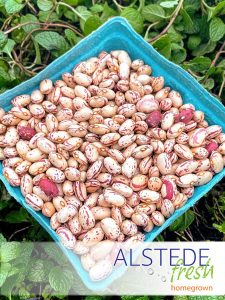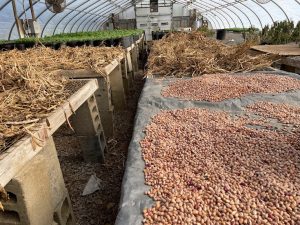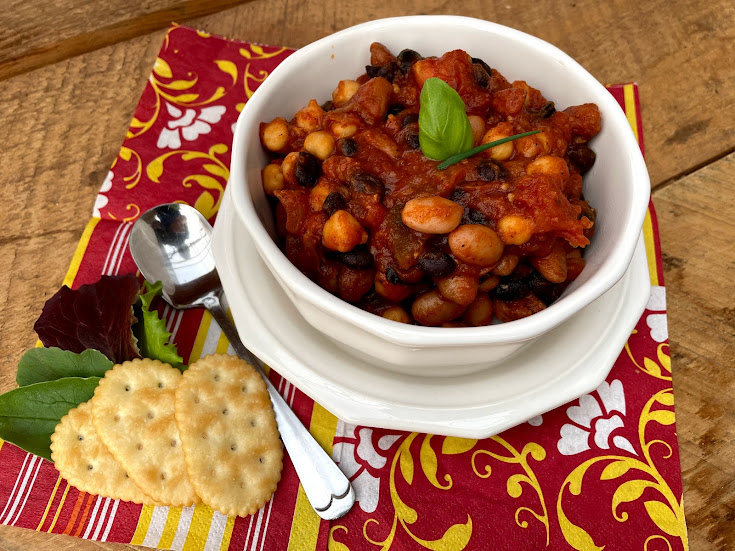Spilling the Beans
Spilling the Beans
French horticultural beans are a small but mighty crop on our farm and we’re spilling the beans to let everyone know about their greatness. They are small in that we only farm less than an acre of these beans, mighty, as these beans allow one to eat well year round! Eating healthy and in season… Read More »

Horticultural beans are a category of bean that are grown on a bush, like snap and soybean, and are classified as a legume, along with peanuts and peas, as they originate from the seeds of flowering plants. Legumes are indeed a vegetable and some consider them to be one of the most nutritious and versatile foods around as they are low fat, high in plant compounds and vitamins and minerals.
Grown in long, flat pods they contain large plump seeds that are rich in fiber and protein and are
We grow these dry beans not only for crop diversity but also as they are capable of “fixing nitrogen” meaning taking it from the air and converting it into usable form in the soil. Nitrogen is essential for all forms of life and cultivating plants that can assist with this process is part of our sustainable and regenerative farming processes.

Miss Jenn, our culinary and educational specialist, loves using French horticultural beans in her
We hope you enjoyed learning about these amazing beans and are interested in trying some at home real soon.
Best wishes from our farm kitchen to yours!







